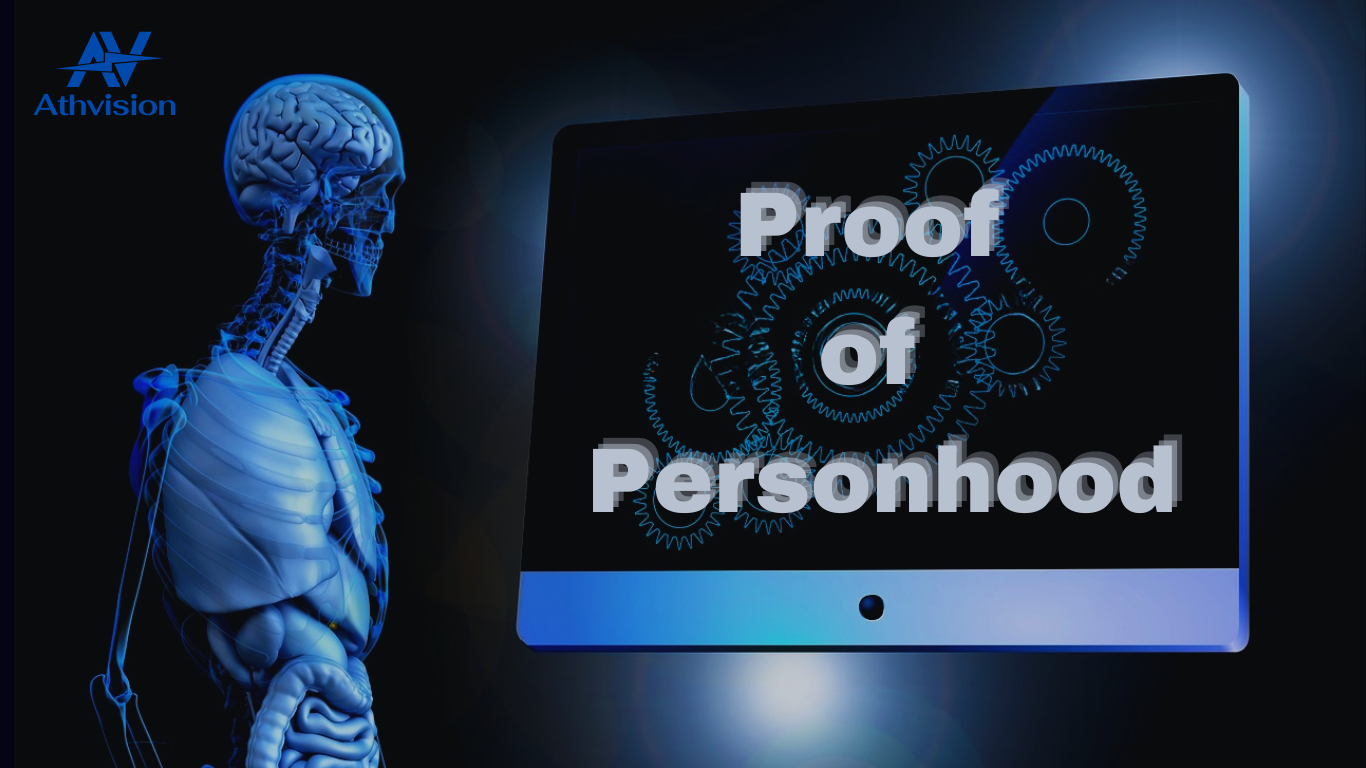Proof of Personhood: A New Frontier in Digital Security
In today’s digital-first world, traditional identity verification methods, like physical IDs and social security numbers, often fall short—they can be lost, forged, or inaccessible to underserved communities. This is where proof of personhood emerges as a game-changing solution. By combining biometrics, behavioral data, and advanced algorithms, proof of personhood creates a unique, tamper-proof “identity signature” that verifies an individual’s uniqueness without relying on outdated processes. Secured through cryptographic techniques, this modern approach not only enhances security but also ensures privacy and wider accessibility. Whether opening a bank account, accessing services, or participating in digital economies, proof of personhood simplifies verification while empowering individuals to navigate an increasingly interconnected world seamlessly. This technology marks the future of identity—secure, efficient, and inclusive for all.
What is Proof of Personhood (PoP)?
Proof of Personhood (PoP) refers to systems and protocols that ensure a participant in a digital environment is a real, unique human being. Unlike traditional identity verification systems that rely on personal information (such as government IDs or biometric data), PoP focuses on:
- Uniqueness: Each verified identity corresponds to a single human being.
- Non-replicability: AI bots, multiple accounts, or duplicate identities cannot bypass the system.
- Privacy-preservation: Personal identity details are not exposed, maintaining anonymity while proving authenticity.
In essence, PoP creates a system of trust in decentralized and AI-heavy environments without compromising individual freedom or security.
A New Way to Prove You Are You
The concept of “proof of personhood” offers a groundbreaking approach to verifying identity in the digital realm. Gone are the days when a simple password or even a fingerprint scan sufficed. Today, as AI systems become more adept at mimicking human behavior and even personalities, traditional verification methods fall short. We need something more sophisticated, more personal, and more secure—a method that can stand the test of AI impersonation.
How Does Proof of Personhood Work?
Proof of Personhood systems leverages innovative technologies to verify human presence and uniqueness. Some of the key mechanisms include:
- Decentralized Identity (DID): DIDs allow individuals to own and control their identity data using blockchain technology. A verified user receives a cryptographic identity that cannot be duplicated or tampered with.
- Biometric Verification: Privacy-preserving biometric tools, such as facial recognition or fingerprint scans, confirm human presence while ensuring that personal data remains encrypted and decentralized.
- Zero-Knowledge Proofs (ZKPs): ZKPs allow users to prove that they are human without revealing sensitive information. For example, you can verify your uniqueness without disclosing your name, location, or identity number.
- Unique Participation Events: Systems such as “proof-of-humanity” events require real-time human participation—such as video verification or captcha-solving tasks—to confirm authenticity.
- Social Verification: In decentralized communities, participants can verify each other’s identities using peer-to-peer methods, ensuring trust through collective validation.
These tools work together to create a secure, scalable solution for human verification in AI-driven environments.
Applications of Proof of Personhood
Proof of Personhood has far-reaching applications across industries, particularly as AI and blockchain technologies become more mainstream.
- Social Media Platforms: PoP can eliminate bots and fake accounts, ensuring that online engagement, followers, and likes are genuine. This restores trust in user interactions and content credibility.
- Blockchain and Web3 Networks: In decentralized networks, PoP prevents bots from manipulating governance votes, token airdrops, and reward systems. Fair participation is maintained for real users.
- Online Voting and Governance: PoP ensures that digital voting systems are secure, transparent, and free from bot interference, enabling true democracy in online decision-making.
- Resource Allocation: Whether it’s distributing aid, education opportunities, or blockchain tokens, PoP ensures that resources are allocated fairly among real humans.
- Combatting AI Misuse: AI-generated deepfakes, fraudulent content, and impersonation can be mitigated through systems that validate human-authored content and interactions.
The Problem
The problem is multi-faceted and deeply entrenched in the very fabric of our digital existence. With AI systems capable of creating hyper-realistic fake identities, the scope for misuse is vast. From identity theft and fraud to unauthorized access to sensitive information, the repercussions are severe and far-reaching. One chilling example is the infamous “deepfake” technology, which can produce convincing video and audio forgeries, potentially making it seem as if you said or did something you never did.
The crux of the issue is that AI’s ability to replicate human traits advances at a breakneck pace, outstripping the current security protocols meant to protect us. According to a 2023 study by the Cybersecurity & Infrastructure Security Agency (CISA), incidents of AI-facilitated identity fraud have surged by over 200% in the past two years alone.
The Solution
Addressing this conundrum requires innovative thinking and a departure from outdated identity verification models. Enter “proof of personhood” systems that leverage a combination of biometrics, behavior analysis, and cryptographic techniques to establish a unique, unforgeable identity signature. These systems draw on a variety of factors—ranging from biometric data like retinal scans and facial recognition to behavioral cues such as typing patterns and interaction styles—to create a multi-layered identity profile that is exceedingly difficult for AI to replicate.
The Benefits
The benefits of such a system are manifold. For starters, it offers a higher degree of accuracy and security than traditional methods. With a multi-factor approach, even if one element is compromised, others remain intact, providing a robust defense against identity theft. Additionally, the integration of cryptographic elements ensures that personal data is not only verified but also stored securely, minimizing the risk of breaches.
Moreover, proof of personhood empowers individuals by giving them greater control over their digital identities. In an era where data is as valuable as currency, knowing who you are and being able to prove it is a significant asset. It also fosters trust in digital interactions, a commodity becoming increasingly scarce as AI blurs the lines of authenticity.
Use Cases
The potential applications for proof of personhood are vast and varied, spanning multiple sectors and industries. In the financial world, banking could be revolutionized by virtually eliminating fraud and enhancing the security of online transactions. Imagine a world where credit card fraud is a thing of the past, where your digital identity is trusted implicitly because it’s verified through a virtually unhackable system.
In healthcare, proof of personhood could streamline patient verification processes, ensuring that medical records are not only accurate but also accessible only to authorized individuals. This would not only improve patient care but also safeguard sensitive health data from breaches or misuse.
In the realm of social media, proof of personhood could help in combatting fake accounts and misinformation, creating a more authentic online environment. By ensuring that every user is who they claim to be, platforms can foster more genuine interactions and reduce the prevalence of cyberbullying and harassment.
Challenges and Opportunities
While Proof of Personhood offers immense potential, it has challenges.
- Scalability: PoP systems must handle millions of users while maintaining efficiency and accessibility.
- Privacy Concerns: Ensuring that personal data remains protected is critical for widespread adoption. Technologies like zero-knowledge proofs are key to overcoming this challenge.
- Accessibility: PoP systems need to be inclusive, ensuring that people across the globe—regardless of technological limitations—can verify their identities.
- AI Arms Race: As verification tools evolve, so will AI’s ability to mimic humans. Constant innovation in PoP systems is necessary to stay ahead.
Despite these challenges, the opportunities are vast. As decentralized networks and AI ecosystems grow, Proof of Personhood can become the backbone of trust, fairness, and authenticity in the digital age.
The Future of Proof of Personhood
In an AI-dominated world, Proof of Personhood represents a critical step toward building systems that empower humans while mitigating the risks of artificial intelligence. The future could see:
- Integration of PoP across social media, gaming, and Web3 platforms.
- Biometric tools evolving to ensure seamless, privacy-focused verification.
- Global standards for decentralized identity solutions.
- Increased transparency and fairness in AI interactions.
Ultimately, Proof of Personhood will help preserve the value of human presence in a world where machines increasingly participate in our digital lives. By ensuring that humans remain at the center of innovation, PoP safeguards trust, fairness, and integrity in every interaction.
Get Involved
The development and implementation of proof of personhood systems require a collaborative effort between technologists, policymakers, and the public. There are several ways for individuals to get involved in this burgeoning field. One can start by educating themselves on the technology and its implications, staying informed through industry publications and forums. Participating in discussions and workshops can also provide valuable insights and networking opportunities.
For those with a technical background, contributing to open-source projects or engaging with tech companies developing these systems could be a rewarding pathway. Advocating for policy changes that support the adoption of proof of personhood at governmental and corporate levels is another avenue for impact.
Conclusion
In an increasingly AI-dominated world, Proof of Personhood (PoP) emerges as a cornerstone of trust, ensuring that human authenticity remains at the center of digital interactions. By leveraging advanced technologies like biometrics, behavioral analysis, and cryptographic systems, PoP addresses the growing challenges of identity fraud, AI impersonation, and bot manipulation. Its applications span industries—from securing online voting systems and decentralizing blockchain governance to combating misinformation and enhancing healthcare security.
While challenges like scalability, privacy concerns, and the rapid evolution of AI persist, the opportunities PoP offers to foster transparency, fairness, and inclusivity in digital ecosystems are unparalleled. As PoP continues to evolve, it promises a future where identity verification is not only more secure and efficient but also empowers individuals by placing them in control of their digital presence. Collaboration across industries and communities will be crucial to fully realize the transformative potential of PoP, ensuring that humanity remains at the heart of innovation.





